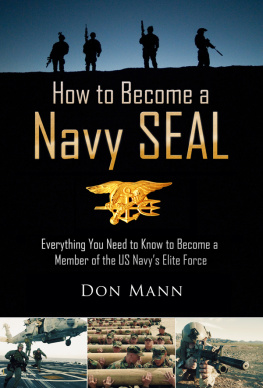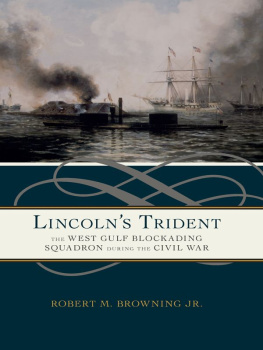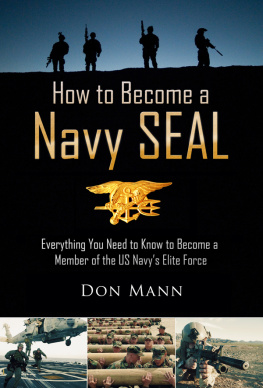CUSHING
MILITARY PROFILES
SERIES EDITOR
Dennis E. Showalter, Ph.D.
Colorado College
Instructive summaries for general and expert
readers alike, volumes in the Military Profiles
series are essential treatments of significant and
popular military figures drawn from world history,
ancient times through the present.
CUSHING
Civil War SEAL
Robert J. Schneller

Copyright 2004 by Robert J. Schneller
Published in the United States by Brasseys, Inc. All rights reserved. No part of this book may be reproduced in any manner whatsoever without written permission from the publisher, except in the case of brief quotations embodied in critical articles and reviews.
Library of Congress Cataloging-in-Publication Data
Schneller, Robert John, 1957
Cushing : Civil War SEAL / Robert J. Schneller, Jr.1st ed.
p. cm. (Military profiles)
Includes bibliographical references (p. ) and index.
ISBN 1-57488-506-5 (acid-free paper)ISBN 1-57488-696-7 (pbk. : acid-free paper)
1. Cushing, William Barker, 18421874. 2. Ship captainsUnited StatesBiography. 3. United States. NavyOfficersBiography. 4. United StatesHistoryCivil War, 18611865Naval operations. 5. United StatesHistoryCivil War, 18611865Commando operations. I. Title. II. Series.
E467.1.C98S36 2003
973.7'58'092dc21 2003012137
Hardcover ISBN 1-57488-506-5
Softcover ISBN 1-57488-696-7
(alk. paper)
Printed in the United States of America on acid-free paper that meets the American National Standards Institute Z39-48 Standard.
Available from:
Potomac Books, Inc.
22841 Quicksilver Drive
Dulles, Virginia 20166
800-775-2518
First Edition
10 9 8 7 6 5 4 3 2 1
To Hayley and Walker
Contents
Maps
Preface
It was David versus Goliath, 1864 style, as the little Yankee picket boat moved in against the big rebel ironclad to kill or be killed. Before embarking on this mission, Will Cushing had bragged that he would come out victorious or toes up. The outcome would be decided in the next few minutes of that dark and stormy night. From his exposed position in the picket boats bow, Cushing stared straight down the barrel of a 6.4-inch rifled cannon while struggling with a complicated device to detonate a torpedo, as mines were called in those days, under the ironclads hull. Above the shouts of the Confederate soldiers ashore and the din of their firing, he could hear the gun captain on the ironclad issuing orders to the crew. In only seconds they would fire. Even as bullets tore through his clothing, Cushing coolly counted to five while the torpedo moved into position, then pulled the lanyard. The roar of simultaneous explosions filled his ears. The round from the Confederate cannon flew over his head. The torpedo threw up an immense column of water, which seemed to flatten out the picket boat like a pasteboard box. But it also blew a hole in the bottom of the ironclad big enough to drive a wagon through and sent her to the bottom. Cushing dove into the cold river and made good his escape. It seemed a miracle he wasnt killed, but impossible missions and narrow escapes were his forte.
William Barker Cushing (184274) was one of the most daring men in American naval history. Like men of todays Navy Sea-Air-Land (SEAL) teams, he excelled at raids behind enemy lines, missions that today are called special operations, and he was better at it than any of his contemporaries, Union or Confederate. During the Civil War, he always seemed to be planning, executing, or recovering from raids to cut out enemy vessels, burn facilities ashore, or gather intelligence. During these missions he fought all manner of rebel forces, from regular cavalry, artillery, and infantry to guerrillas. By the end of the war, he had amassed four commendations from the Navy Department and the thanks of Congress and President Lincoln. All this by a man who was only twenty-two years old when Lee surrendered at Appomattox.
Cushings ego was as big as the great outdoors. He was patriotic, aggressive, tough, and recklessly bold. He disdained people who lacked these qualities. His bravery was matched only by his own bad temper. Once an officer refused to let him lead a mission to capture a particular enemy steamer, which subsequently escaped. Instead of the blue and gold of a dashing service, Cushing said of the officer in his memoirs, he should have worn petticoats.
This is a military biography of Cushing, not a full biography. It dwells neither on his personal relationships nor on his life during peacetime. The focus remains on the daring operations he conducted during the Civil War, as well as on those aspects of his personality that drove him to take such risks.
Many people helped me with this book. I thank Rick Russell, who signed me again for the Military Profiles series. As always, my agent, Fritz Heinzen, has my gratitude for his friendship and guidance. Im indebted to Chris Fonvielle and, as usual, Bob Browning and Mark Hayes for suffering through a draft of the entire book and offering valuable suggestions for its improvement.
I thank the staffs of the Chautauqua County Historical Society in Westfield, New York; the Historical Museum of the State Historical Society of Wisconsin in Madison, Wisconsin; the D. R. Barker Library in Fredonia, New York; the National Archives; and the Library of Congress for providing documents and photographs. The staffs of the Naval Historical Foundation and the Naval Historical Centers Photographic Section also have my gratitude for their assistance with illustrations. I remain grateful to Barbara Auman, Davis Elliott, Glenn Helm, Jean Hort, Young Park, and Tonya Simpson of the Navy Department Library for granting my constant requests for books and documents and answering countless reference questions. Although these people helped make this book better, responsibility for its flaws remains with me.
Last but not least, I want to thank my wife, Rebecca, and sons, Zachary and Noah, for their patience and support during the time I spent with Cushing and not with them.
Chronology
1842 | Cushing is born in Wisconsin on November 4. |
1857 | Cushing is appointed acting midshipman on September 25. |
1861 | His resignation from the Navy is accepted on March 23. On April 1, he is appointed to serve as masters mate on the Minnesota. On September 13, he resigns again. On October 19, Cushing is warranted a midshipman, dating from June 1. On October 25, he is ordered to North Atlantic Blockading Squadron (NABS). On November 6, he assists in destroying the Ada in the Rappahannock River. |
1862 | On March 23, Cushing is detached from the Cambridge. He is ordered to the Minnesota on May 14 and promoted to lieutenant on July 16. On October 3, Cushing participates in an engagement in the Blackwater River, where he is placed in command of the Ellis. |
1863 | From April 11 to May 4, Cushing is senior officer in charge of gunboats cooperating with the Army in defense of Suffolk, Virginia. On September 5, he is detached from the Shokokon to command the Monticello. |
1864 | On October 27, Cushing sinks the CSS Albemarle and is promoted to lieutenant commander as a result. He takes command of the USS |
Next page








